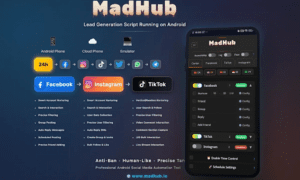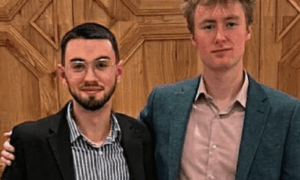Lead Like It Lasts: The Case for Integrity in Fast-Moving Tech Environments
A perspective on building tech teams and systems that don’t just move fast—but endure.
In today’s ‘Tech-verse’—marked by pitch-deck saturation and short-cycle delivery—real influence is increasingly defined not by visibility, but by structural clarity and thoughtful execution. It’s no longer just about building what’s new, but building what scales—strategically, inclusively, sustainably, and with intent.
This leadership shift is reflected in the work of global product strategist Ritu Walia, who leads through thoughtful system design rather than projection—a model that allows people, tools, and workflows to perform at their best. Her insights shed light on a model of leadership that centers on systems, not short-term bias—and outcomes that endure.
“I had to find my path in spaces where my perspective wasn’t always represented,” Walia shares. “What became clear is that leadership means listening carefully, solving meaningful problems, and making room for others to excel.”
As a U.S.-based product strategist and technologist, Ritu Walia has spent over a decade working at key intersections—semiconductor design, AI applications, and tech workflow systems—where she’s built a reputation for both technical clarity and human-centered collaboration.
A Tech Foundation Meets Strategic Vision
With more than ten years in product strategy, Walia operates where tech meets business results. Her insights have appeared across respected industry forums—including recognition in top semiconductor and technology conferences, and as a finalist for global award nominations. She has also contributed technical papers on verification methods, machine learning applications, and productivity systems adopted by engineering teams.
“Technical knowledge alone won’t get you far,” Walia points out. “You need to connect with stakeholders and translate complex ideas effectively, especially when decisions impact multiple teams.”
Her focus on what engineers and customers truly need creates lasting impact. By bridging specialized teams that rarely interact, she’s helped deliver practical improvements that result in faster workflows and higher tool adoption rates.
From Flowcharts to Frameworks: The Architecture That Holds It All
In high-stakes environments—where cycles are short and complexity is high—the most crucial work often lies beneath the surface.
Consider product adoption. Its success hinges not only on launch velocity but on whether teams internally understand, align, and execute based on unified signals. Walia’s strategy work has emphasized connecting the dots between tool design, cross-team workflows, and operational enablement—an invisible architecture that drives sustainable scale.
Her approach centers on coordination, not command: building mechanisms where product-market signals meet organizational readiness, and where feedback loops translate into actionable insight.
Operating with Strategic Insight
Tech leadership today isn’t about knowing what to build next—it’s about removing friction at scale. That demands an understanding of how engineering teams work, how customer support channels think, and how decision-makers prioritize risk.
Walia’s operating principle has long been rooted in aligning those groups—not through sentiment, but through situational awareness and clear systems. Her work translating needs across product, marketing, and customer engineering has resulted in fewer blockers, faster rollout clarity, and increased adoption durability.
The Quiet Power of Asking Better Questions
Walia’s signature approach emerged during what first appeared to be a technical crisis. What everyone assumed was a software issue turned out to be teams working with different mental models and incomplete communication.
“Instead of rushing to code fixes, I asked if we could simply map the entire workflow together,” she explains. “We used whatever visualization tools worked—sticky notes, sketches, anything to see the full picture.”
The exercise did more than solve the immediate problem—it revealed design oversights that could have spiraled later. “Progress hinges on unblocking how we think,” she reflects. “The sharpest minds often observe quietly before contributing.”
Her method, now a cornerstone, aligns technical work with practical realities. By integrating AI into workflows, she enables teams to streamline efforts without added complexity, fostering clarity and collaboration across the ecosystem.
Durable Systems Over One-Off Wins
Sustainable tech leadership isn’t measured in deliverables—it’s measured in systems that allow others to deliver long after you’re gone.
In teams Walia has influenced, recurring practices reflect this ethos:
- Build structure for sustainable acceleration—not top-down control.
- Design systems that produce clarity and consistency—not just short-term metrics.
- Prioritize next-person usability—every action should be transferable.
These practices are becoming essential in environments where burnout, turnover, and product sprawl threaten continuity.
Early Execution Meets Long-Term Value
At just 22, Walia spearheaded a national bulletin platform focused on sharing actionable business and strategic insights in the fields of web design for tech & startups. This challenging initiative tested her ability to build effective systems while maintaining clear directional focus—a notable achievement at such a young age.
This technical leadership yielded significant results when she secured collaboration with a government-affiliated body. The strategic partnership generated opportunities exceeding tens of thousands (in Rupees), providing crucial momentum for the emerging company while exposing Walia to high-stakes leadership decisions early in her career.
These early experiences inform her current work, where she:
- Developed research-backed product improvements
- Built bridges between engineering experts and customer teams
- Converted complex technical challenges into actionable paths forward
- Shaped adoption strategies that focus on real-world usage
The project validated that meaningful traction doesn’t come from volume—it comes from relevance and repeatability.
Today, those same principles anchor her work in semiconductor product operations and scaling enterprise systems. Across initiatives, her focus remains on enabling outcomes by designing environments that empower—not overwhelm—the people inside them.
Creating Room for New Voices
Her career has increasingly focused on helping others navigate their technical paths. She regularly makes time for mentoring early-career engineers, particularly those from backgrounds not widely represented in tech leadership.
Her mentorship addresses both technical skills development and the confidence needed to contribute meaningfully to important conversations.
“Being visible in tech isn’t about seeking attention,” she reflects. “It’s about making sure your signal reaches the people who need to hear it. When done with purpose, that signal creates momentum for everyone involved.”
Building Platforms for Collaborative Progress
Walia has also contributed to modern initiatives across the industry as a thought leader—projects aimed at bridging knowledge gaps that help improve design-to-deployment continuity and building collaborative platforms that support real-time tech decisions across borders. Some of these efforts reflect in frameworks and knowledge systems Walia has helped shape or inspire—focused not on headlines, but on building scalable tools that elevate expert voices and empower next-generation problem-solvers.
Looking ahead, Walia aims to create frameworks that elevate diverse technical perspectives and envision building spaces where insights from across the tech ecosystem can flow with clarity and trust.
“My work should stand for more than technical input,” she explains. “It should create possibilities and fresh perspectives—encouraging our industry to consider not just what we build, but who benefits from it and who shapes those decisions.”
What the Future Needs Now
What would it look like if leadership development prioritized long-term thinking over short-term charisma?
Walia advocates for frameworks, not templates. For making tech leadership about structures that allow inclusion, pace, and clarity to co-exist. In her model, success isn’t who speaks the loudest—it’s whose work enables others to act with confidence and direction. Her story demonstrates that tech leadership requires more than technical expertise. It demands attentive listening, steady persistence, and a commitment to helping others succeed.
Walia’s journey from handling the launch of a company at 22 to becoming a respected voice in technical strategy shows how individuals can drive positive changes even in well-established industries. For those building careers in technical fields, her path offers a valuable lesson: combining deep knowledge with genuine human connection creates the most lasting impact.
In a world where execution cycles are accelerating, her message is simple: activity without alignment is unsustainable. And innovation without systems won’t stick.
Tech doesn’t just need better code. It needs better scaffolding. And it needs more leaders willing to build it.



































